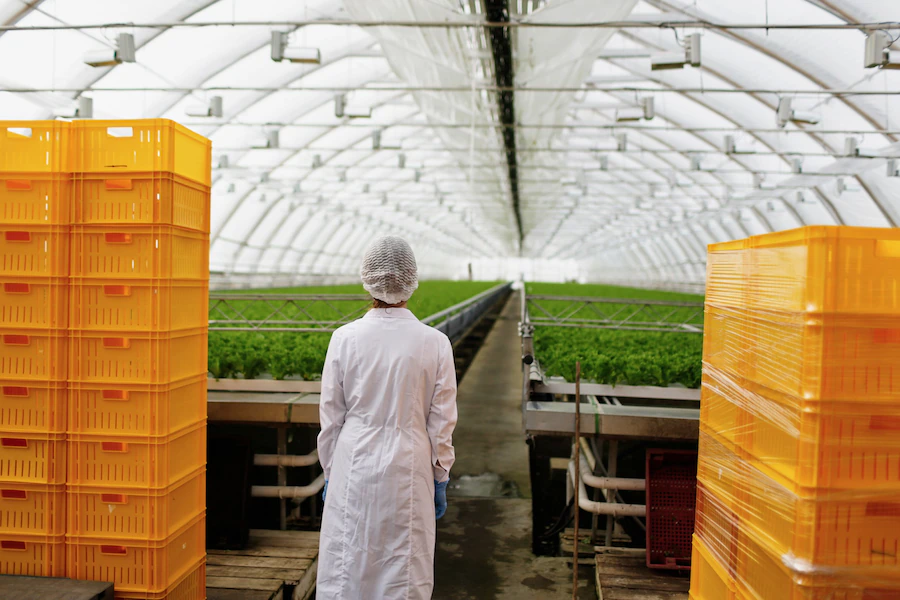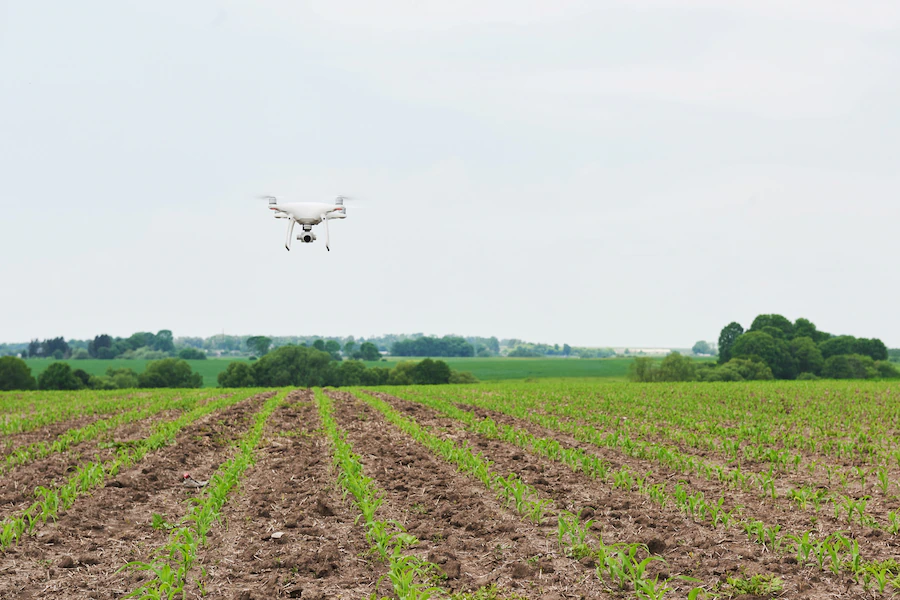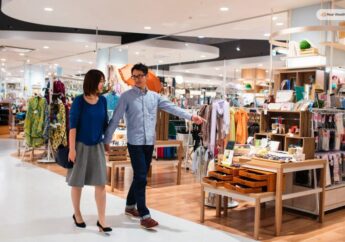Fabric Buildings: Applications In Agriculture To Warehousing
by Abdul Aziz Mondal Business Published on: 26 July 2023 Last Updated on: 24 September 2024

In recent years, fabric buildings have emerged as a revolutionary solution, transforming the landscape of various industries with their remarkable versatility and adaptability. These innovative structures, also known as tension membrane or fabric-covered buildings, offer many benefits ranging from cost-effectiveness and rapid installation to energy efficiency and customizable designs. As a result, they have garnered significant attention and utilization across a wide spectrum of sectors, proving their worth in both traditional and emerging fields.
The following paragraphs will explore the versatile applications of these innovative structures across diverse industries. From their humble beginnings in agriculture to their widespread adoption in warehousing and logistics, the journey of fabric buildings showcases a remarkable blend of efficiency and sustainability, solidifying their place as a cornerstone of modern infrastructure across the globe.
Revolutionizing Farming: The Flourishing Fields Of Fabric Structures In Agriculture

Initially conceived as practical alternatives to conventional buildings, fabric structures were commonly employed in agricultural settings, in which they quickly found favor among farmers and ranchers seeking flexible, efficient, and cost-saving options for housing livestock and storing crops and equipment.
Fabric buildings continue to revolutionize the agricultural landscape, providing shelter for a diverse range of livestock, including cattle, poultry, and pigs, and offering secure storage space for harvested crops such as grain, hay, and other produce.
Additionally, these fabric-covered sanctuaries have become indispensable in horticulture, fostering the growth of various crops within controlled environments by establishing innovative and efficient greenhouses.
Versatility Across Industries: The Applications Of Fabric Buildings
The manifold advantages of fabric structures did not go unnoticed by other industries, prompting their gradual adoption in numerous spheres where they fulfill specific operational requirements. You’ll delve into the remarkable versatility of fabric buildings and their widespread applications across various industries:
Construction: Empowering On-Site Solutions
In the dynamic construction world, where projects often demand rapid progress and adaptability, fabric buildings have emerged as a game-changer, empowering on-site solutions with unparalleled efficiency and practicality. These versatile structures have revolutionized how construction companies approach various operations, presenting innovative alternatives to traditional construction methods and temporary shelters.
Construction projects necessitate effective on-site management and coordination among project teams. Fabric buildings provide an ideal solution for establishing on-site offices that cater to the diverse needs of construction management. Due to rapid installation, project managers can swiftly set up comfortable and fully functional workspaces.
Equipped with essential amenities such as electricity, HVAC systems, and connectivity, these fabric-covered offices foster a conducive environment for decision-making and streamlined communication among key stakeholders. By bringing management closer to the construction site, fabric buildings facilitate real-time supervision, efficient decision-making, and quicker problem-solving, ultimately expediting project timelines and enhancing overall project performance.
The construction industry relies heavily on various valuable resources, from materials and equipment to tools and machinery. Ensuring these assets are safe and secure storage is crucial for efficient project execution. Fabric buildings offer an optimal solution for on-site material storage needs.
The clear-span design, without interior columns, maximizes available space, enabling construction companies to organize and store materials easily. The durable fabric membrane covering and robust steel frame protect stored items from weather-related damage, minimizing the risk of delays and material wastage due to exposure.
Moreover, the versatility of fabric buildings allows for easy customization, ensuring that the storage space precisely aligns with the unique requirements of each construction project.
Besides equipment storage, fabric structures are reliable weather-resistant shelters, providing a protective haven for workers and ongoing construction activities. Rain or shine, these structures shield construction sites from adverse weather, allowing personnel to carry out their tasks.
Construction sites also require temporary structures to fulfill specific operational needs. Engineered fabric buildings shine in their ability to offer versatile and adaptable solutions for these requirements. Whether temporary workshops, equipment storage, or additional workspace, fabric structures can be swiftly assembled and reconfigured to suit changing demands.
The ease of relocation and expansion allows construction companies to optimize the use of fabric buildings across multiple projects, maximizing return on investment and minimizing construction-related expenses.
Events And Entertainment: Unleashing Creative Possibilities
The events and entertainment industry has witnessed a renaissance with the advent of fabric buildings, which have unlocked creative possibilities and revolutionized how events are hosted.
Due to their unparalleled flexibility and adaptability, fabric structures have become a preferred choice for trade shows, exhibitions, concerts, festivals, and sports events.
The aesthetic appeal of fabric membranes, available in a variety of colors, provides an attractive and modern backdrop that captivates attendees and enhances the overall ambiance of the event. Organizers can effortlessly customize the size, shape, and layout of fabric buildings to create unique and dynamic spaces perfectly tailored to the specific requirements of each occasion.
One of the standout features of fabric buildings in the events and entertainment industry is their ability to create expansive covered venues that accommodate large crowds without compromising comfort or visual appeal. From open-air concerts to grand exhibitions, fabric structures offer a cost-effective solution for organizers to host in any season, irrespective of weather conditions. The versatility of these structures allows for incorporating seating areas, stages, lighting rigs, and other event amenities, transforming empty spaces into mesmerizing spectacles.
Moreover, the natural light diffusion through the fabric membrane creates a well-lit and welcoming environment during the day while providing opportunities for stunning visual displays and lighting effects during evening events. Whether it’s an intimate gathering or a grand-scale extravaganza, fabric buildings provide the canvas for event planners to craft unforgettable experiences that leave a lasting impact on attendees.
Aviation: Elevating Aircraft Infrastructure

Reliable and efficient aircraft infrastructure is paramount in the fast-paced, safety-critical aviation industry. Fabric buildings have emerged as a pivotal solution for the aviation sector, transforming how aircraft storage, servicing, and protection are approached. These versatile structures have become increasingly popular as aircraft hangars and maintenance facilities due to their cost-effectiveness and rapid construction.
Fabric hangars offer a viable alternative to traditional metal hangars, providing ample space for aircraft storage while maintaining structural integrity and safety standards. Additionally, their modular design allows for easy expansion and relocation, enabling aviation operators to adapt their facilities to changing fleet sizes or operational requirements.
Furthermore, fabric maintenance facilities provide an optimal environment for aircraft repairs and servicing, with translucent fabric membranes allowing natural light to illuminate the workspace, reducing the need for artificial lighting during daylight hours and creating a well-lit and conducive atmosphere for maintenance crews to carry out their critical tasks.
As the aviation industry continues to evolve, fabric buildings are a testament to innovation, revolutionizing aircraft infrastructure and ensuring safe and efficient operations in the skies.
Mining And Energy: Fortifying Remote Operations
Logistics and infrastructure challenges are pronounced in the rugged and remote landscapes of mining and energy operations. Engineered fabric buildings have emerged as a vital asset in fortifying these remote operations, offering versatile solutions that cater to the unique needs of these industries.
The ability to quickly deploy fabric structures in such remote locations provides an efficient and cost-effective way to establish on-site facilities for equipment storage, personnel accommodations, and administrative offices. These durable fabric-covered buildings safeguard valuable machinery and equipment from harsh weather conditions, ensuring their longevity and reducing the risk of downtime.
Additionally, they serve as sheltered spaces for mining personnel, providing a comfortable and safe environment amidst challenging terrains. With fabric structures facilitating logistics and enhancing operational efficiency, mining, and energy companies can overcome the logistical challenges of remote locations and focus on maximizing their productivity and resource utilization.
Warehousing And Logistics: Streamlining Supply Chains
The warehousing and logistics industry is driven by the need for efficient and agile storage solutions to support the seamless flow of goods. Fabric buildings have emerged as key players in streamlining supply chains, providing versatile and cost-effective warehousing options that cater to ever-changing inventory demands.
These clear-span structures offer expansive storage space, allowing for efficient organization and management of goods, materials, and inventory. With the ability to quickly erect and dismantle fabric buildings, logistics companies can adapt to fluctuating storage needs during peak seasons and swiftly respond to shifts in market demand.
The weather-resistant fabric membrane shields stored items from the elements, reducing the risk of damage and ensuring product integrity. By optimizing storage space, reducing handling times, and enhancing inventory management, fabric buildings contribute significantly to the efficiency of warehousing and logistics operations, ultimately improving customer satisfaction and the overall competitiveness of businesses in the industry.
Military And Disaster Relief: Rapid Deployment Solutions
Speed and efficiency are paramount in times of urgent need, whether during military deployments or disaster relief efforts. Fabric buildings have proven invaluable rapid-deployment solutions in military and disaster relief scenarios.
For military forces, engineered fabric structures serve as temporary aircraft hangars and equipment storage facilities, enabling swift and efficient operations in remote areas or emergencies. The ease of assembly and disassembly allows military personnel to set up these structures quickly, ensuring minimal disruption to critical operations.
Similarly, these buildings provide immediate shelter for affected communities during disaster relief efforts, offering a haven amidst the chaos. The rapid deployment of fabric structures allows relief organizations to respond swiftly to emergencies, providing essential services and support to those in need. From protecting military assets to offering emergency relief, fabric buildings exemplify adaptability and efficiency, providing a lifeline in times of crisis.
Conclusion
Fabric buildings exemplify innovation and versatility, impacting diverse industries positively. From revolutionizing farming with cost-effective solutions to streamlining supply chains in warehousing and logistics, these structures reshape the future, enhancing productivity globally. In aviation, mining, and energy, fabric buildings fortify remote operations, while in events and entertainment, they unlock creative possibilities. They also serve as invaluable rapid-deployment solutions in military and disaster relief efforts. Overall, fabric buildings remain at the forefront of innovative infrastructure solutions, ensuring resilience and progress for businesses worldwide.
Read Also:



































































































